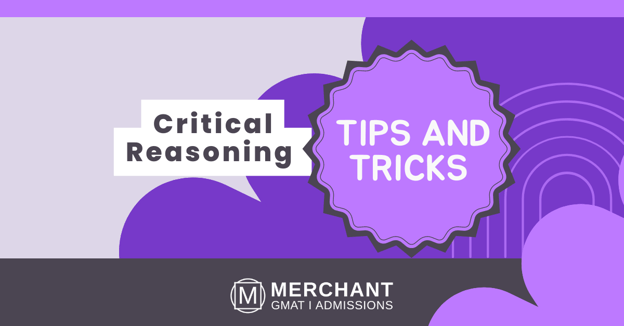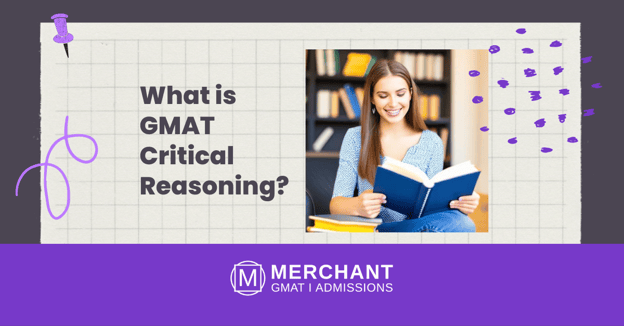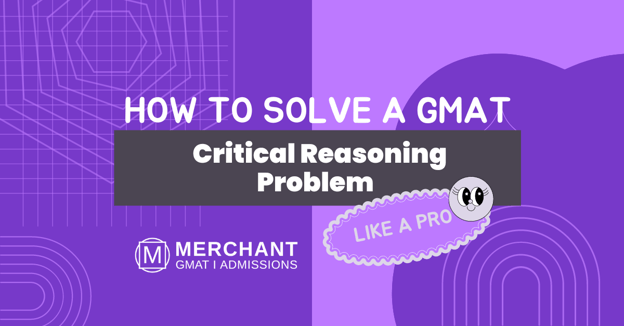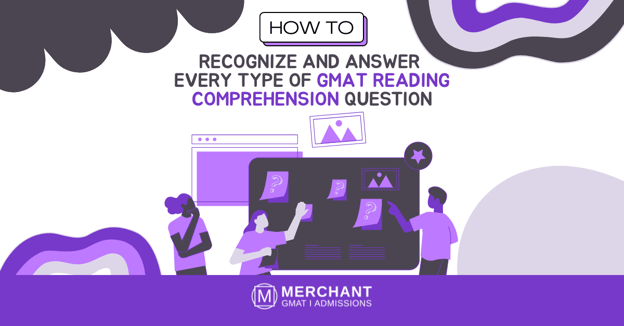Approach the Question: Our Critical Reasoning Guide

Critical reasoning is one of the most interesting sections in the exam, as it’s both dynamic and has real life implications. You may wonder why, and the answer is that it requires the reader to be an excellent listener and understand how the author states his points of view and how he arrives to conclusions, if there’s any. That’s an absolutely great skill to have whenever you’re reading something complex or work related. However, understanding the author’s logic is only one part of the equation.
Types of questions
First of all, one must identify the question type and understand the question itself. Yes, that means reading the question before reading the text and the answer choices. There are approximately 8 types of questions in Critical Reasoning and each of them require a different approach, so make sure you know them all.
For example, let’s assume we’re dealing with a strengthening problem. We’re probably going to get a question that looks like this:
– Which of the following, if true, most strongly supports the argument/hypothesis?
– Which of the following, if true, most strengthens the argument?
– Which of the following, if true, most justifies the claim made by executives?
– Which of the following, if true, would provide most support for the prediction?
When you see one of these problems, you know the GMAT’s presenting you with a strengthening problem and that allows you to be very specific with how you approach it.
A strengthening question is centered around a conclusion from the author that is presented in the form of “Because Y, then Z”
Y = Premise
Z = Conclusion
Examples:
– Because he didn’t study, he failed the exam.
– Because he showed up late, he didn’t get the job.
– Because Tom Brady has won 7 Super Bowls, he’s the undisputed best of all time.
– Because he didn’t read Merchant GMAT Guides, he fell short of a 700.
Once we know what we’re looking for, then we can go through the passage. Let’s give it a try with an official guide problem.
If you want to have a go on your own first, then click on the link below and come back here for the explanation:
Explanation
FIRST OF ALL WE READ THE QUESTION: “Which of the following, if true, would most strongly indicate that the plan will be a success?”
THIS TIME WE KNOW I PICKED A STRENGTHENING ONE, BUT THERE ARE KEYWORDS PRESENT THAT CAN HELP YOU IDENTIFY IT (“WOULD MOST STRONGLY INDICATE”).
NOW THAT WE KNOW THE TYPE OF QUESTION, WE KNOW THAT THE PARAGRAPH WILL HAVE A “BECAUSE Y, Z”. LET’S TRY TO FIND IT:
The heavy traffic in Masana is a growing drain on the city’s economy—the clogging of the streets of the central business district alone cost the economy more than $1.2 billion over the past year. In order to address this problem, officials plan to introduce congestion pricing, by which drivers would pay to enter the city’s most heavily trafficked areas during the busiest times of the day.
BECAUSE HEAVY TRAFFIC IN THE CENTRAL BUSINESS DISTRICT HAS COST THE ECONOMY $1.2 BILLION, OFFICIALS PLAN TO INTRODUCE CONGESTION PRICING.
WE NOW KNOW WHAT THE OFFICIALS WAY OF THINKING WAS AND OUR OBJECTIVE IS TO FIND THE ANSWER CHOICE THAT WOULD STRENGTHEN THIS THE MOST.
IN CRITICAL REASONING, IT’S VERY IMPORTANT TO FOLLOW THE PROCESS OF ELIMINATION.
(A) Approximately one-fifth of the vehicles in the central business district are in transit from one side of the city to the other.
THIS ISN’T AN ANSWER I WOULD IMMEDIATELY ELIMINATE, BUT I DON’T SEE HOW IT PROVES THAT THOSE WHO ARE IN TRANSIT WOULD FOR EXAMPLE TAKE ANOTHER ROUTE.
(B) Planners expect that, without congestion pricing, traffic in Masana is likely to grow by 6 percent in the next five years .
THIS WILL PREVENT IT FROM GROWING, BUT IT DOESN’T HELP THE CURRENT ECONOMIC SITUATION. OUT.
(C) In other urban areas, congestion pricing has strongly encouraged carpooling (sharing of rides by private commuters).
THIS COULD VERY WELL BE THE ANSWER. THERE IS EVIDENCE SUPPORTING THIS PLAN. IT HAS WORKED IN OTHER CITIES. IT HAS EFFECTIVELY REDUCED THE NUMBER OF CARS.
(D) Several studies have shown that a reduction in traffic of 15 percent in Masana could result in 5,500 or more new jobs.
THIS ONLY GIVES US ANOTHER REASON TO SOLVE THIS PROBLEM, BUT DOESN’T TELL US STRENGTHEN THE PROPOSED PLAN. OUT.
(E) Over 30 percent of the vehicles in the city’s center are occupied by more than one person
THIS WOULD WEAKEN THE PROPOSED PLAN, AS AN ALREADY LARGE SHARE OF DRIVERS TAKE MORE THAN ONE PERSON AND THE ECONOMIC PROBLEM IS STILL THERE. OUT.
AFTER GOING THROUGH EACH OF THEM, IT BECOMES CLEAR C IS THE CORRECT ANSWER, NOT A.
And that’s how you tackle just one type of Critical Reasoning problem!
We strongly encourage you to become familiar with the other types and practice many of them.
Our Critical Reasoning Guide was written by Verbal Coach Agustin Artero
If you need help with the GMAT or the admissions process we can help. For more information on our different GMAT products see:
- GMAT private classes – see the stories of Will, Teddy, Jessica and Nico and how they approached their GMAT journey with Merchant.
- Merchant Academy – a GMAT teaching innovation that makes taking the GMAT, like an MBA. Click to find out more about the Merchant Academy format.
- Merchant GMAT Hall of Fame – a gallery of some of our clients over the last eight years.
For admissions help see some of the client stories on our admissions page.




